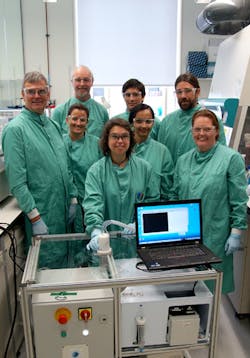Fluorescent device detects harmful bacteria on food industry surfaces
Scientists at the University of Southampton in England are trialing a new device they developed that samples and detects—in hours rather than days—Listeria monocytogenes, a pathogen that is transmitted by ready-to-eat foods such as milk, cheese, vegetables, and cold cuts.
Related: New biochip in development could detect pathogenic markers rapidly
The device can sample single cells and biofilms (groups of microorganisms where cells stick together on surfaces): compressed air and water is used to remove the cells before they are introduced to an antibody. If Listeria monocytogenes is present, cells react with the antibody to produce a fluorescent signal, which is detected by a special camera.
Dr. Salomé Gião and Prof. Bill Keevil from Southampton’s Centre for Biological Science Unit have been studying Listeria monocytogenes biofilms under different conditions. "We researched biofilms under different stresses to find the optimum pressure to remove cells from different surfaces without disrupting the cells themselves," says Gião. "We also found that biofilms can form on surfaces, even if they are covered in tap water."
The Southampton work is part of the Biolisme project, which is working to develop a biosensor capable of collecting and detecting Listeria monocytogenes on food industry surfaces, thereby preventing contaminated products from entering the market. The project was started in 2009 by a consortium of six partners from four different countries, and is funded by the EU’s Seventh Framework Programme for Research (FP7).
Current techniques to detect Listeria monocytogenes take days of testing in labs, but the new device aims to collect and detect the pathogen on location within three to four hours. This early and rapid detection can avoid the cross-contamination of ready-to-eat food products. Traditional methods of testing, where sample cells are cultivated in labs, are also flawed. 'Stressed' cells will not grow in cultures (and will therefore produce negative results) despite the bacteria being present, live, and potentially harmful. Alternative techniques, based on molecular methods, will detect all cell types, but don’t differentiate between live and harmless dead cells, which can remain after disinfection.
The prototype device has been finalized in France and field trials are now underway to test the device before it is demonstrated in food factories.
For more information, please visit http://www.biolisme.eu.
-----
Don't miss Strategies in Biophotonics, a conference and exhibition dedicated to development and commercialization of bio-optics and biophotonics technologies!
Follow us on Twitter, 'like' us on Facebook, and join our group on LinkedIn
Subscribe now to BioOptics World magazine; it's free!

